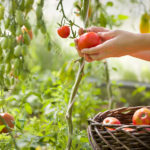By David Blyweiss, M.D., Advanced Natural Wellness
October 18, 2013
- What can you do?
- 4 reasons you should avoid mammograms
- Safe, non-invasive breast cancer prevention
If you aren’t aware of it already, this is National Breast Cancer Awareness month (NCBAM.)
Now the words “breast cancer” strike fear in the hearts of women everywhere. But it’s also becoming quite prevalent in men, so I think everyone should pay attention.
I’m all on board with anything we can do to prevent breast cancer. But I’m not entirely convinced NCBAM is pointing us in the right direction.
You see, the key focus this month is to encourage women to go in for their mammograms. There is even a National Mammography Day set aside on October 18th.
MD Exposes the Hidden Danger to Your Eyes

When your eyesight starts to fail, it's a real problem. Suddenly you can't go to the grocery store... you can't get to the doctor if you have an emergency... you can't meet your friends for dinner…
Your "regular" doctor doesn't have time to keep up with the latest research. And the same goes for eye doctors. They go to school to learn how to fit you for glasses and contacts, but have no way of preventing the damage and loss of eyesight that threatens your freedom and independence.
Let me show you something that explains a LOT about how your eyes work.
In my FREE Special Report, I'll show you a HUGE, untapped resource for your eyes that safely and naturally restores clear, effortless eyesight.
Click here to get started...
However, mammograms are not preventive. In fact, they aren’t even accurate tools for breast cancer diagnosis. Worse, they may actually be causing cancer in women with the BRCA1/2 genes that put women at higher risk of breast cancer.
Unfortunately, mammography has become such an ingrained part of women’s wellness programs that it’s hard to bust the myths associated with them. Women demand them and doctors keep prescribing them.
Before you go in for your next screening, let me fill you in on a few details. Plus I’ll show you a much safer, healthier and more accurate way to monitor your breast health.
If you’ve been sold on regular mammography screenings, I urge you to consider these facts…
- It’s estimated that about 1.3 million women have been over-diagnosed with breast cancer in the last 30 years. That’s about one in every three women who have a mammogram.These are women who have pre-cancerous cells.But they are growing so slowly they would never develop into cancers. The problem is nobody tells them these growths aren’t an immediate threat. So these ladies end up undergoing treatment.And this treatment is not limited to a lumpectomy or mastectomy.It also involves chemotherapy, radiation treatments and hormone therapy. All for an abnormal growth that might never have caused any problem at all!
- There is another problem that’s just as disturbing. Under-diagnosis. It turns out mammograms aren’t doing much to reduce the number of women who progress to late-stage breast cancer.In the past three decades or so, late-stage breast cancer has only been reduced in about 8 cases out of every 100,000 women. Do the math and you’ll figure out that mammograms have barely made any difference at all in reducing, or preventing, late state breast cancer.
- Now, we would all like to think – and probably do think – that mammograms save lives. But it’s a pretty sure thing that’s not the case.Data from the Canadian National Breast Screening Study discovered it didn’t matter whether women had mammograms or performed their own breast exams. Both groups had similar mortality rates. And there wasn’t a reduction in breast cancer death in either of them.
- Current guidelines urge women with a BRCA gene mutation to begin mammograms as early as 25 years of age. But this is the absolute worst thing for these women.Why? Because the radiation used in these tests increases cancer risk in women with these genes. Even more so when women are exposed to it before the age of 30. This is a horrible turn of events and one you should be aware of.
Magnetic resonance imaging (MRI) is almost as bad. It doesn’t change the outcome. And it’s even more likely to pick up all sorts of dangerous tissue, whether it’s cancerous or not. Once again, this leads to over-diagnosis and excessive treatment.
So what’s a woman to do?
The World's Quickest Solution for Ending Prostate and Urinary Misery
This has recently been revealed to be one of the only real breakthroughs in prostate health.
The seeds of a strange fruit (sometimes called "Chinese Apples") hold powerful phytonutrients that are a revolution in prostate health.
In fact, UCLA and Veterans Administration research have now proved this to be true.
Not only that, but it may be the worlds quickest solution for ending prostate misery.
Simply stated, these phytonutrients represent a huge step beyond beta sitosterol, saw palmetto, and other phytosterols alone.
Simply click HERE if you want to have fast prostate relief...restful, uninterrupted sleep...no more constant "urges to go"...enhanced virility...and optimal prostate support for life.
Today, more than ever, I see National Breast Cancer Awareness month as a means to promote mammograms.
But there is a much safer and accurate alternative you may not have heard about. It’s called breast thermography. It has a very high level of accuracy when it comes to ruling out, detecting and even preventing cancer.
Better yet, it’s safe, noninvasive and doesn’t use radiation. Instead, it relies on a heat-sensing infrared camera to scan for ab¬normalities.
There have been extensive studies on the accuracy of thermography. But for some reason, the news never seems to get to the women who need it.
In one study researchers found an abnormal thermogram was 10 times more significant as a future risk indicator for breast cancer than having a history of it in your family. In another, thermography alone was the first alarm in 60% of the cases of women who later developed breast cancer. And this study wasn’t rushed – it was done over ten-years – so some time was put into the results.
And where thermography really shines is in its ability to detect the growth of new blood vessels that fuel the spread of cancer cells (angiogenesis.)
No other method of detection can do this. The other methods only find tumors once they’ve developed.
This early detection of angiogenesis is great when it comes to preventing breast cancer. Because with just a few healthy changes it can be reversed before becoming cancerous.
And that’s exactly what Breast Cancer Awareness Month should be about. Not finding breast cancer after it has progressed, but preventing it in the first place.
Resources:
Bleyer A, Welch HG. Effect of three decades of screening mammography on breast-cancer incidence. N Engl J Med. 2012 Nov 22;367(21):1998-2005.
Miller AB, To T, Baines CJ, Wall C. The Canadian National Breast Screening Study-1: breast cancer mortality after 11 to 16 years of follow-up. A randomized screening trial of mammography in women age 40 to 49 years. Ann Intern Med. 2002 Sep 3;137(5 Part 1):305-12.
Pijpe A, et al. Exposure to diagnostic radiation and risk of breast cancer among carriers of BRCA1/2 mutations: retrospective cohort study (GENE-RAD-RISK). BMJ. 2012 Sep 6;345:e5660.
M. Gautherie and C. M. Gros, “Breast Thermography and Cancer Risk Prediction,” Cancer, vol. 45, no. 1 (January 1, 1980), pp. 51-56.
Spitalier, H., Giraud, D., et al. Does Infrared Thermography Truly Have a Role in Present-Day Breast Cancer Management? Biomedical Thermology, Alan R. Liss New York, NY. pp. 269-278, 1982






